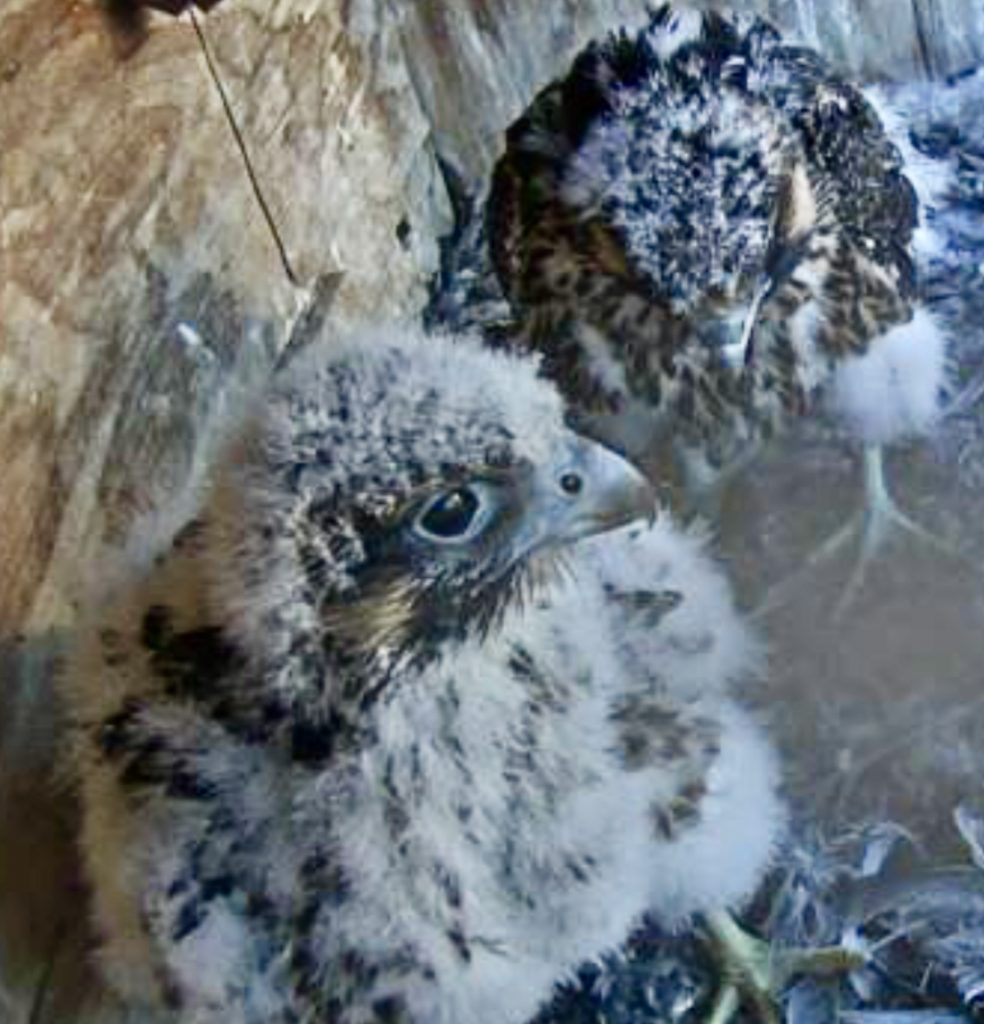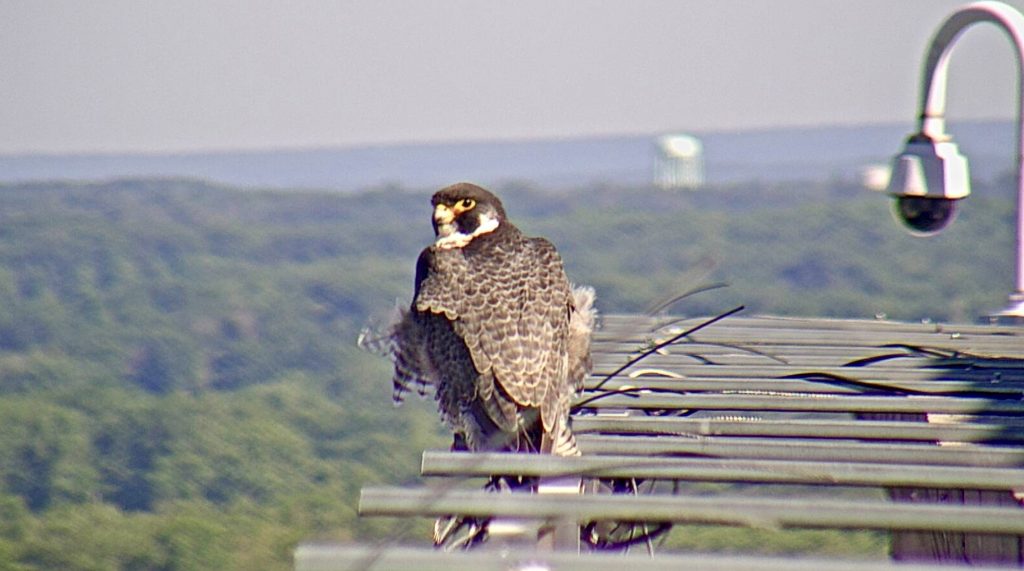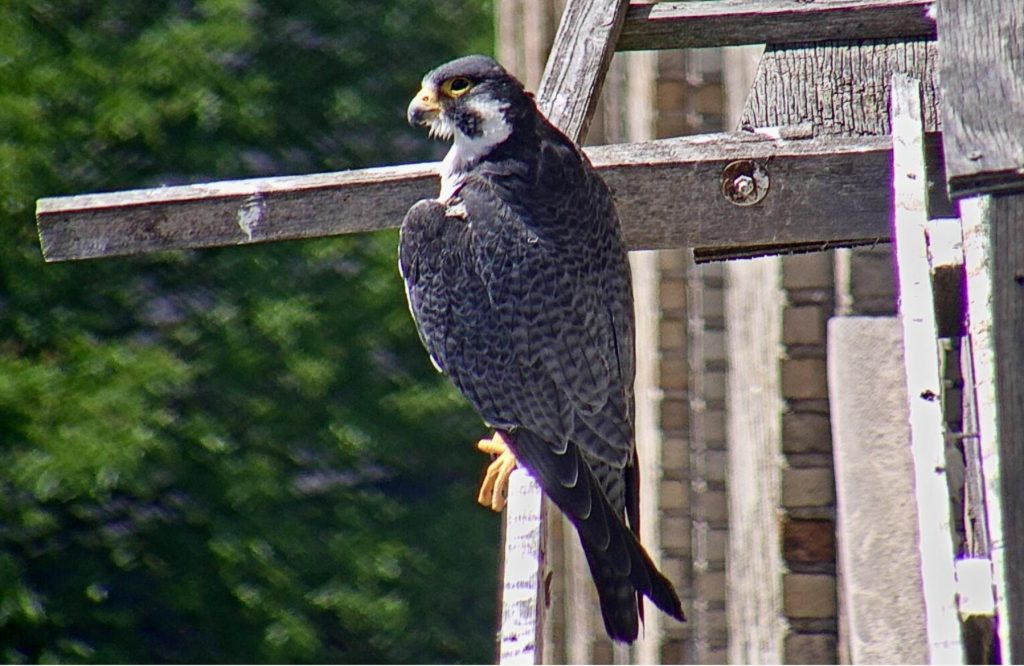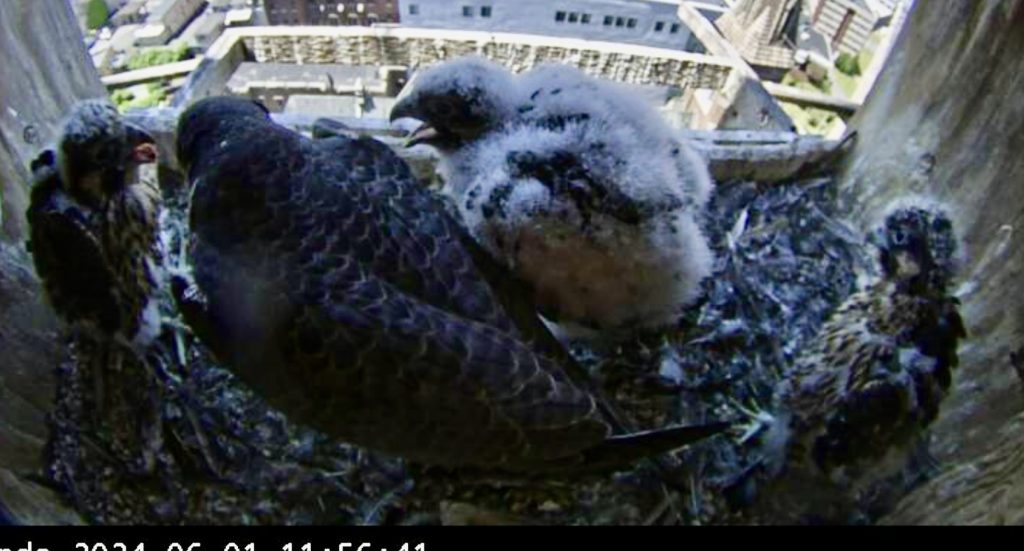Update for Saturday, June 1, 2024

We have been observing Astrid and Ares for over a decade, and one of the most fascinating behaviors they exhibit is cooperative hunting. This activity is especially common during the breeding season when their need for prey increases due to the additional mouths to feed. In our Utica pair, and likely with Peregrines in general, it is the female who initiates the cooperative hunt and almost invariably makes the kill. Astrid typically targets Pigeons, and the most common tactic involves Ares flushing a flock into flight while Astrid focuses on an individual Pigeon and determines her angle of attack.

Peregrine Falcons are formidable hunters, renowned for their speed and precision. While they often hunt alone, pairs of Peregrines sometimes exhibit cooperative hunting behaviors, especially during the breeding season when the demand for food is high to sustain their growing chicks. This cooperation showcases their remarkable intelligence and adaptability. In a typical cooperative hunt, the male and female utilize their unique physical attributes and roles to increase their chances of a successful catch. The male, being smaller and more agile, often is tasked with making the first move – using his speed to flush prey out of hiding or to scatter a flock of birds. His role is crucial in creating an opportunity for the female, who is larger and more powerful. As the prey is driven into the open and disrupted by the male’s maneuvers, the female capitalizes on the chaos. She uses her greater strength and speed to pursue the disoriented prey. When hunting in this way, she usually secures her prey by coming in from behind it as opposed to using the Peregrine’s trademark high speed dive called a “stoop”.

Communication between the pair is essential for successful cooperative hunting. They use a combination of vocalizations and body language to coordinate their efforts. Sharp, rapid calls may signal the presence of prey or serve as cues for timing their attacks. This synchronized effort allows them to target larger or more elusive prey that would be challenging for a single falcon to capture. Through this teamwork, they ensure a more consistent and plentiful food supply for their nestlings, enhancing the survival chances of their offspring.
